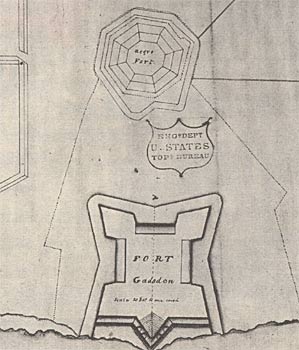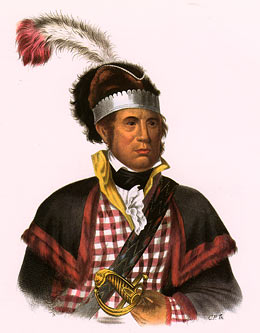Florida's Negro Fort: 1815 - 1816

The fort was a menace to all slaveholders in the vicinity -- possibly the most ominous threat that the U.S. slave industry had ever seen. General Jackson was incensed. As commander of the Southeast, he issued an ultimatum to the Spanish governor: destroy the fort, seize the lawless "banditti" who manned it, and return all U.S. Negroes who had been "enticed from the service of their masters." If not, Spain must face the consequences for harboring brigands: U.S. forces would invade Spanish territory and destroy the fort themselves.
Under the command of a black man named Garson and a Choctaw chief (whose name is unknown), the inhabitants of Negro Fort not only provided protection for the community, but also launched raids across the Georgia border. According to the Savannah Journal, fugitives ran from as far away as Tennessee and the Mississippi Territory to seek refuge at the fort.

Plan of Fort Gadsden, constructed in 1818 on the grounds of the Negro Fort. The location of the Negro Fort is noted in the top-center of this 1818 sketch by Captain James Gadsden. National Archives
On July 27, following a series of skirmishes in which they were routed by Negro Fort warriors, the American forces and their 500 Lower Creek allies launched an all-out attack under the command of Lieutenant Colonel Duncan Clinch, with support from a naval convoy commanded by Sailing Master Jairus Loomis.

William McIntosh, the Coweta Creek chief who colluded with Andrew Jackson to wage war on the Seminoles and lead slave raids against the maroons. Hand-colored lithograph from the McKenney-Hall History of the Indian tribes of North America (1858), after the 1825 painting by Charles Bird King.
The two sides exchanged cannon fire, but the shots of the inexperienced black gunners failed to hit their targets. A shot from the American forces entered the opening to the Fort's powder magazine, igniting an explosion that destroyed the fort and its occupants.
Garson and the Choctaw chief, among the few who survived the carnage, were handed over to the Creek, who shot Garson and scalped the chief. Other survivors were returned to slavery.

https://refixico.wordpress.com/2017/09/25/colin-kaepernick-dick-gregory-and-national-anthem-controversy-is-connection-to-the-fort-negro-massacre-says-fixico/
ReplyDeletehttps://refixico.wordpress.com/2017/10/05/national-anthem-controversy-fort-negro-massacrcecarl-nelsons-big-show-and-seminole-maroon-activist-fixico/
ReplyDeleteUnder the command of a black man named Garson and a Choctaw chief (whose name is unknown), the inhabitants of Negro Fort not only provided protection for the community, but also launched raids across the Georgia border. According to the Savannah Journal, fugitives ran from as far away as Tennessee and the Mississippi Territory to seek refuge at the fort. buy lawn dresses online , pakistani lawn dresses online shopping
ReplyDelete